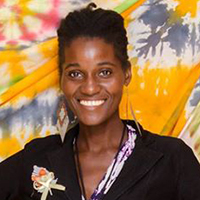WITH international funding slowly drying up, organisations here are calling on the Government for more budgetary allocations to help prevent and treat HIV/AIDS.One such organisation is the Pan Caribbean Partnership against HIV and AIDS (PANCAP), whose director, Mr. Dereck Springer, is pushing for stronger emphasis to be placed on ‘prevention’ in healthcare campaigns and education initiatives.
Springer told the media recently that HIV campaigns are returning to their initial message — that of advocating for “HIV Prevention”, despite the fact that international donor organisations are no longer as generous as they used to be in terms of providing the kind of funding needed for such projects.
For PANCAP’s ‘back to basics’ stance, he gave the decline of late in emphasis on prevention, given the success that treatment has been having on people living with HIV/AIDS (PLWHA).
“When HIV was considered a death sentence in the early 80s and throughout the 90s,” Springer said, “the emphasis was on prevention tools such as condoms, abstinence, and having one faithful partner.”
He gave the advent of HIV medication and the countless media stories about people living longer with HIV as the reason why the key message of using prevention tools has somewhat declined over the last few years. That being the case, Springer said, his organisation has taken the lead in revitalising awareness of HIV prevention methods through social media education campaigns and through its Knowledge for Health (K4Health) campaign.
The aim of the project at reference, he said, is improving family planning and reproductive health services in low- and middle-income Caribbean countries, and it is sure to change the way persons in those countries access, share, and use family planning knowledge.
MAIN OBJECTIVE
The main objective of the social media initiative, Springer says in a statement, is to inspire HIV prevention messages among key populations from PANCAP’s network of civil society organisations, partners, stakeholders, and all parties involved in healthcare.
Those “communication products”, Springer says, are available for viewing at PANCAP.org, or by following @pancaporg on Twitter and ‘liking’ the PANCAP Facebook page available at: https://www.facebook.com/pancapnetwork.
“The objective,” he says, “is to reach the young generation in particular through the use of popular social media platforms, including Twitter and Facebook.
“We believe they are a key population with regard to the urgent need for more prevention education,” he said.
REALITY CHECK
Springer said in the statement that an estimated 34 million people are living with HIV in the world. Since the virus was identified 32 years ago, more than 35 million people have died of HIV or AIDS. Scientific advances have however been made in HIV treatment, and laws to protect people living with HIV have been put in place. There is also a clearer understanding now of the virus, through experiments, research and awareness.
“Despite this, each year, people are diagnosed with HIV, because they do not know the facts about how to protect themselves and others,” Springer said in the statement.
He also pointed out that stigma and discrimination remain a reality for many infected with HIV and AIDS.
The commemoration of World AIDS Day (WAD) on December 1st every year since 1988 is a reminder that, since HIV has not gone away, there is still a vital need for fundraising to increase awareness, fight prejudice and improve education about the virus.
According to UNAIDS in a report released recently, the world has seen a 35 per cent decrease in new HIV infections since 2000; a 42 per cent decrease in AIDS-related deaths since the peak in 2004; a 58 per cent decrease in new HIV infections among children since 2000; an 84 per cent increase in access to antiretroviral therapy since 2010; and 15.8 million persons on treatment were accessing antiretroviral therapy as at June 2015.



.jpg)








